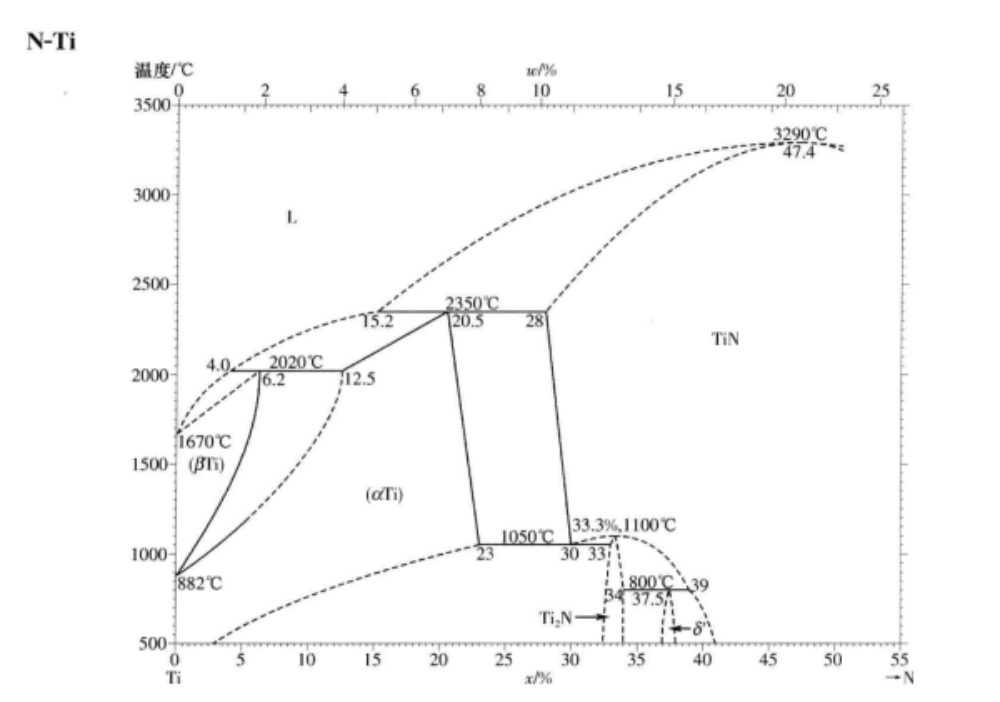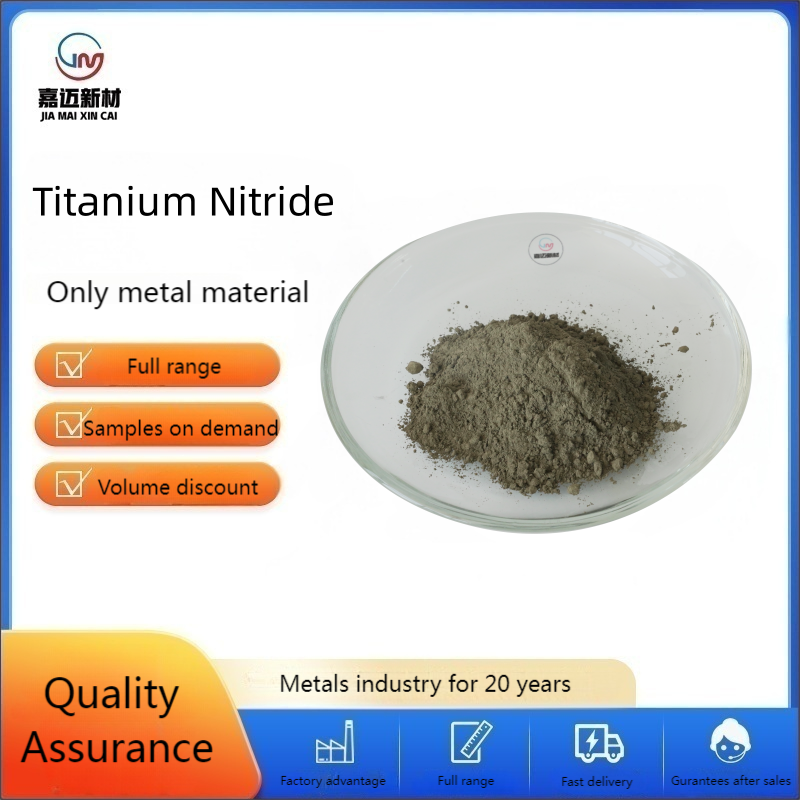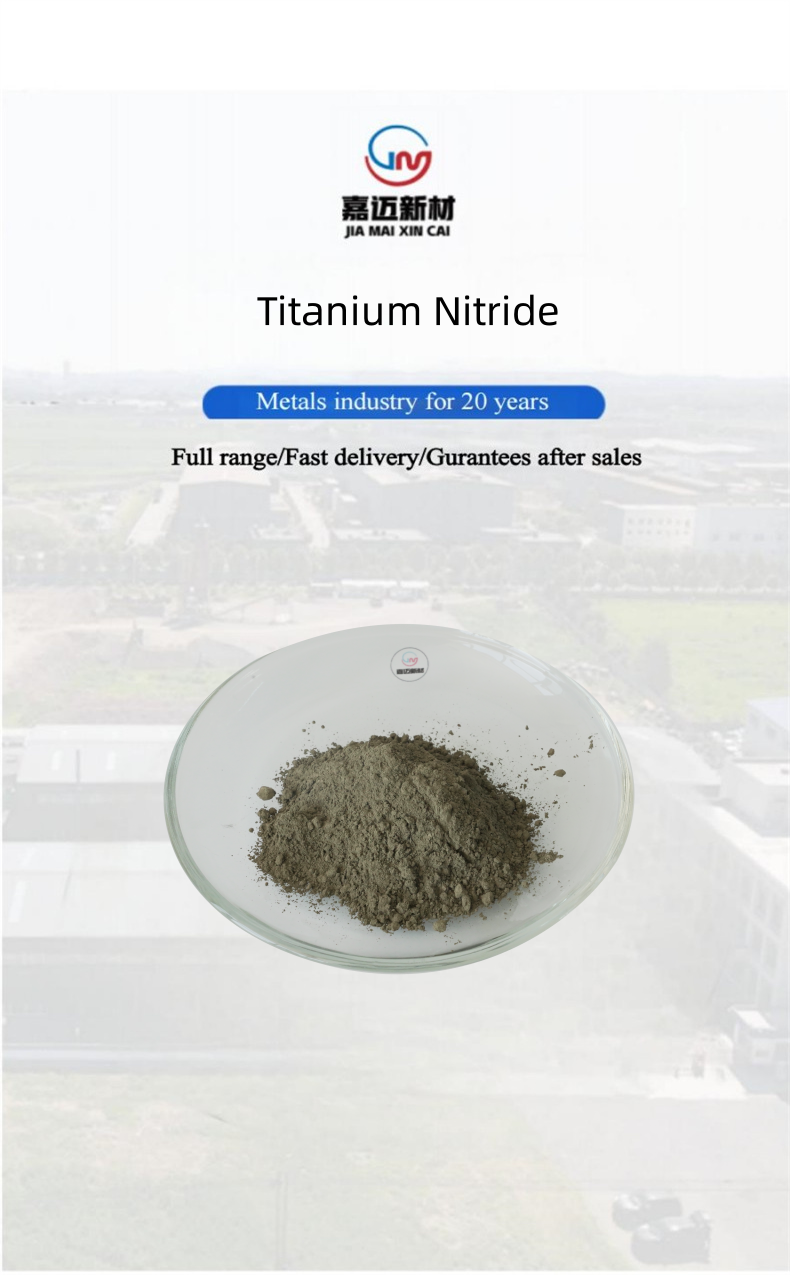
Product Name: Titanium Nitride (TiN)
Specification: 0.8-10um (D50)
Appearance: Irregular
Color: Yellow brown or black
Features: high hardness, good chemical stability, wear resistance, heat and oxidation resistance, corrosion resistance, good electrical conductivity and resistance performance
Usage: Coating for cutting tools and grinding tools, ceramic materials, metal preparation, electronic materials, laboratory materials, wear-resistant coatings, optical materials, medical materials, aerospace, military, medical devices, microelectronics, battery field, bioelectronic electrodes, etc

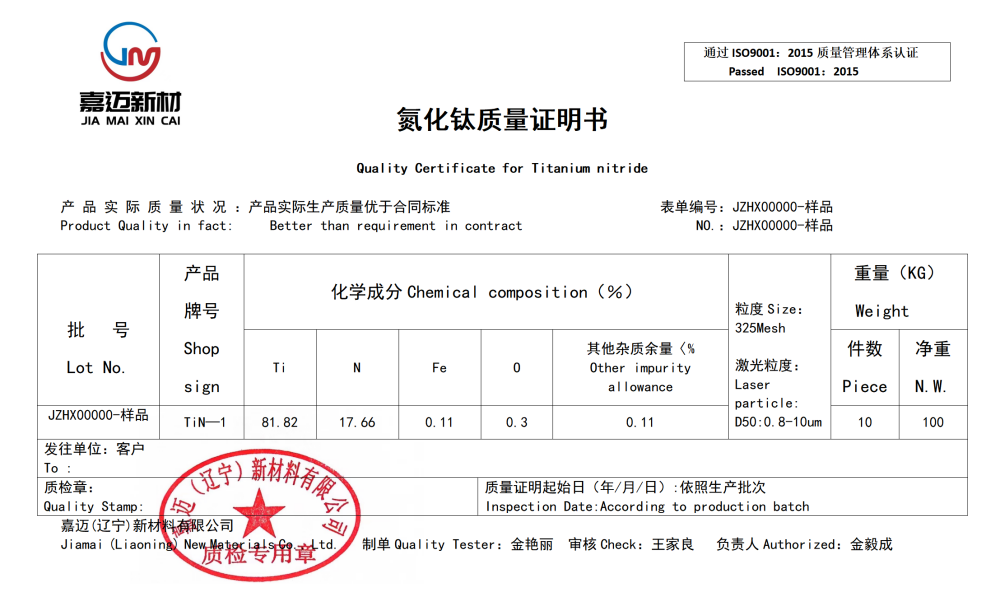

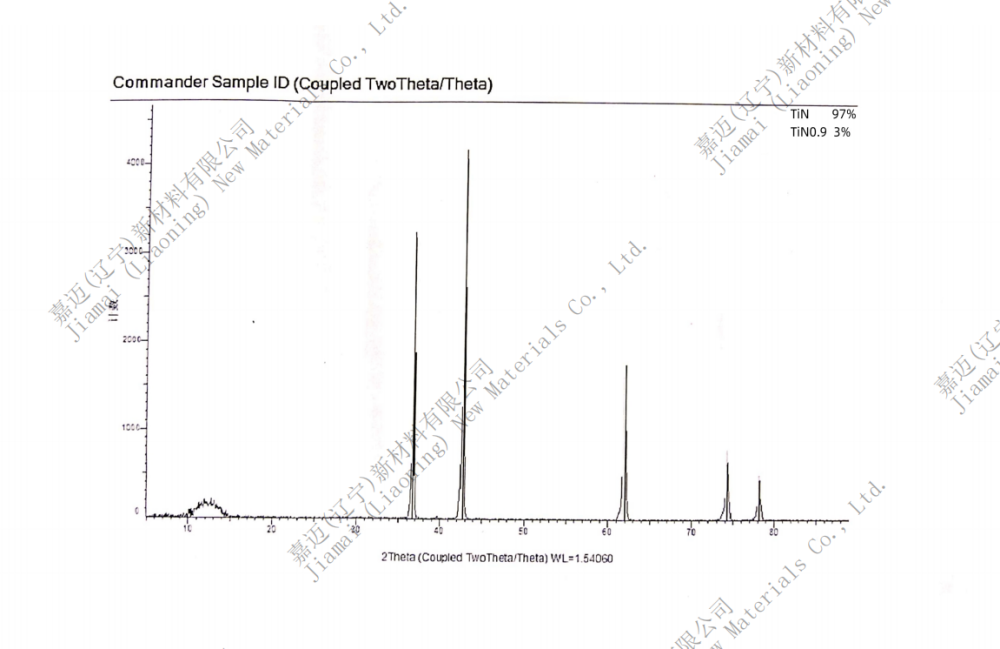

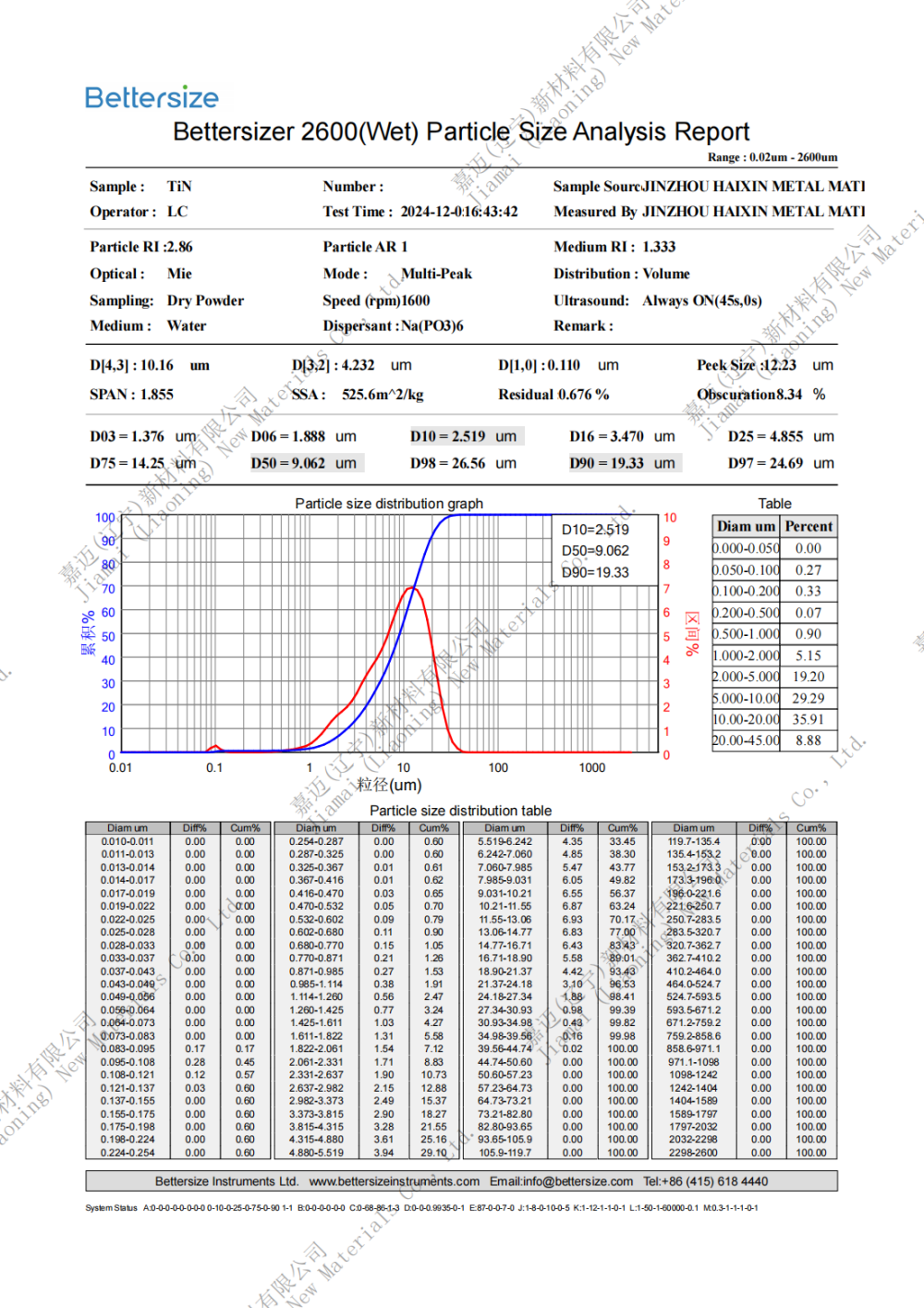

Titanium Nitride
CAS:25583-20-4
EINECS:247-117-5
Molecular formula: TiN
Molecular weight: 61.874
Density: 5.24 g/mL
Melting point: 2930 ° C
Appearance: Bronze colored solid with a cubic crystal structure
Solubility: insoluble in water, slightly soluble in aqua regia and hydrofluoric acid
Properties: high melting point, high hardness, and good chemical stability. Its density is lower than most metal nitrides, which makes it perform well in high-temperature environments.
Synthesis process:
1. Titanium nitride alloy method: It involves mixing TiN with metal powder and directly nitriding at high temperatures
Made. Adding a small amount of metal elements (such as Co, Nb, etc.) or using gold in titanium nitride alloys
TiN is prepared by directly mixing powder with metal powder. Gold added in titanium nitrogen alloy method
The main components include: C, Mn, Ni, A1, Co, etc.
2. Hot pressing method: TiN powder is used as raw material and pressed with hot gas (N2 or HF)
Force sintering to obtain TiN particles. Add a certain amount of Si3N4 to high-purity TiN powder
Powder is compressed under certain pressure to form TiN products. This method is a comparison
A more mature method with low equipment requirements and lower costs.
Purpose:
Titanium nitride is widely used in high-temperature structural materials and superconducting materials due to its high melting point (2950 ℃), high hardness, and good chemical stability. It can be used as a conductive material for electrodes and electrical contacts in molten salt electrolysis, and when heated in vacuum, it loses nitrogen and generates titanium nitride with lower nitrogen content, which has high conductivity and superconductivity.
In the field of tool manufacturing, titanium nitride ceramic coatings are widely used in tool coatings due to their high hardness (Vickers hardness HV 2500 or higher) and good wear resistance and heat resistance. The tool coated with titanium nitride has a longer service life, and the cutting speed and feed rate can also be increased, thereby reducing machining time.
In the biomedical field, titanium nitride is used to make implants for interventional therapy, such as occluders for congenital heart disease, due to its good biocompatibility. These occluders not only improve biocompatibility, but also significantly reduce the risk of thrombosis.
In addition, titanium nitride is also used in the semiconductor industry, lubricants, decorative materials, and as a gold coating in the jewelry industry. It can be added to magnesia carbon bricks to improve slag erosion resistance and has wide applications in the fields of bearings and sealing rings.
The storage method mainly includes keeping the container sealed, placing it in a tight container, and storing it in a cool, dry place. Specifically, titanium nitride should be kept sealed in storage containers and placed in tightly sealed containers, stored in a cool, dry place.